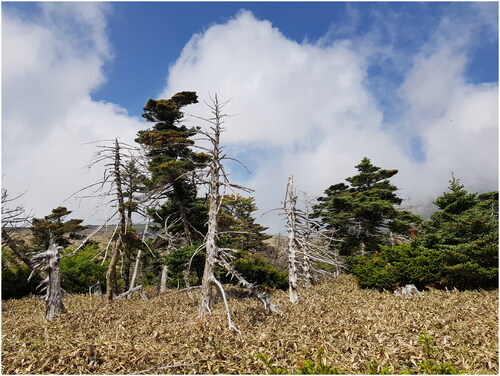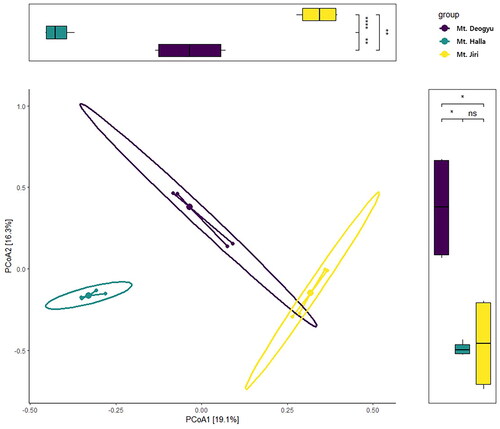Figures & data
Figure 1. Image of the cone and leaves of Abies koreana on Mt. Halla (photograph taken on June 7 2020).

Figure 3. Three soil sampling sites in Mts. Deogyu, Halla, and Jiri (the map was downloaded from Google Earth version 9.169.0.0, accessed on August 31 2022).
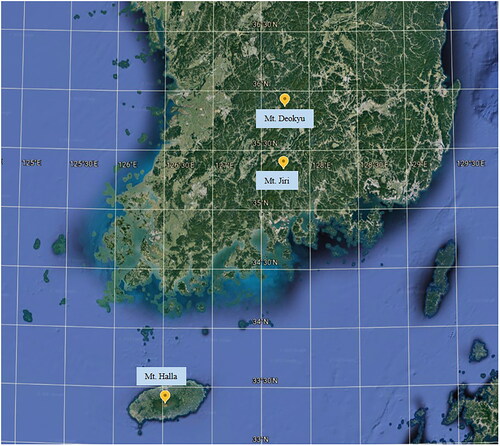
Table 1. List of sampling sites and their geographic coordinates.
Table 2. List of samples obtained from the natural habitats of Abies koreana.
Table 3. Physiochemical properties of rhizosphere soil.
Figure 4. Relative abundance of the top three dominant phyla (Ascomycota, Basidiomycota, Mortierellomycota) in alive and dead Korean fir soils from Mt. Deogyu, Mt. Halla, and Mt. Jiri.
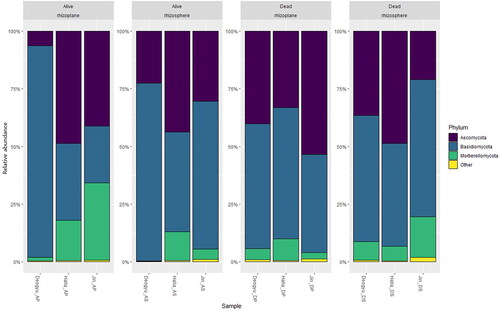
Table 4. Comparison of taxonomic groups identified by Illumina MiSeq sequencing analysis.
Figure 5. Relative abundance of major families in alive and dead Korean fir soils from Mt. Deogyu, Mt. Halla, and Mt. Jiri. Mortierellaceae, Russulaceae, Sebacinaceae, and Serendipitaceae were the major constituents of each fungal community.

Figure 6. Relative abundance of major genera in alive and dead Korean fir soils from Mt. Deogyu, Mt. Halla, and Mt. Jiri.
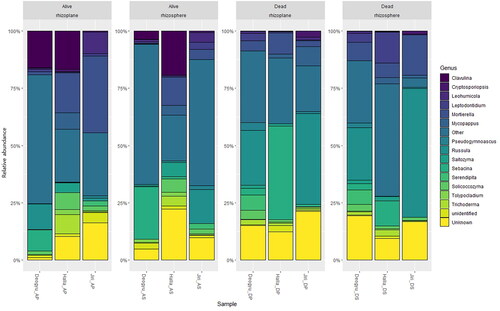
Figure 7. Hierarchical clustering of sequences classified at the genus level. The soil samples from the healthy trees in each study location were clustered together, while those from the dead trees in each study site were also grouped together.
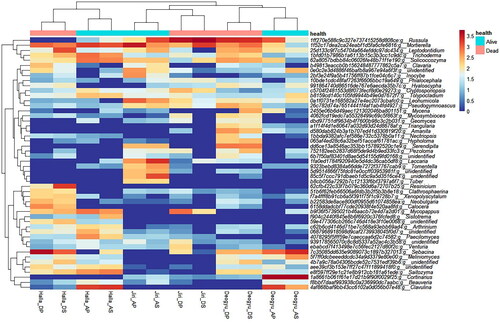
Table 5. Comparison of fugal diversity indices of each representative sample.
Figure 9. Heat tree showing the abundance of fungal genera with p < 0.05 based on the plant’s status (alive and dead). The color represents the percent of operational taxonomic units (OTUs) assigned to each taxon (blue represents an alive tree and yellow represents a dead tree, respectively). Node diameter is proportional to the out counts and edge width is proportional to the number of reads.
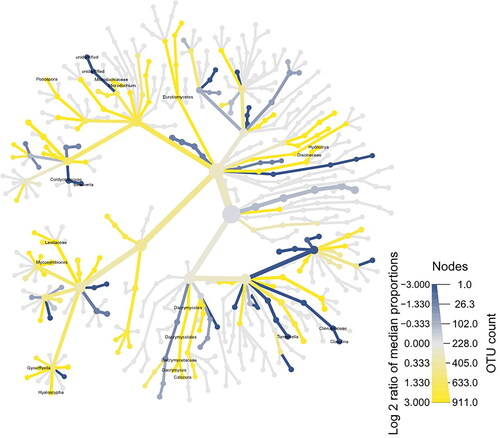
Supplements_Clean.docx
Download MS Word (1.6 MB)Data availability statement
All fastq files have been deposited into an NCBI SRA under the accession number PRJNA884490.

